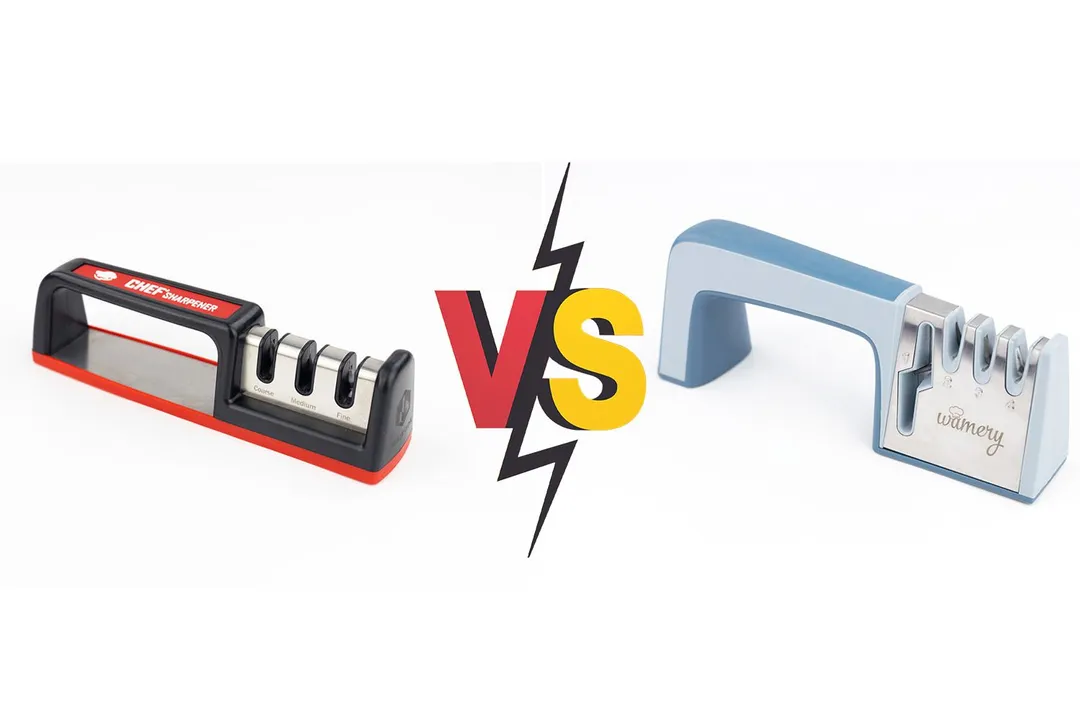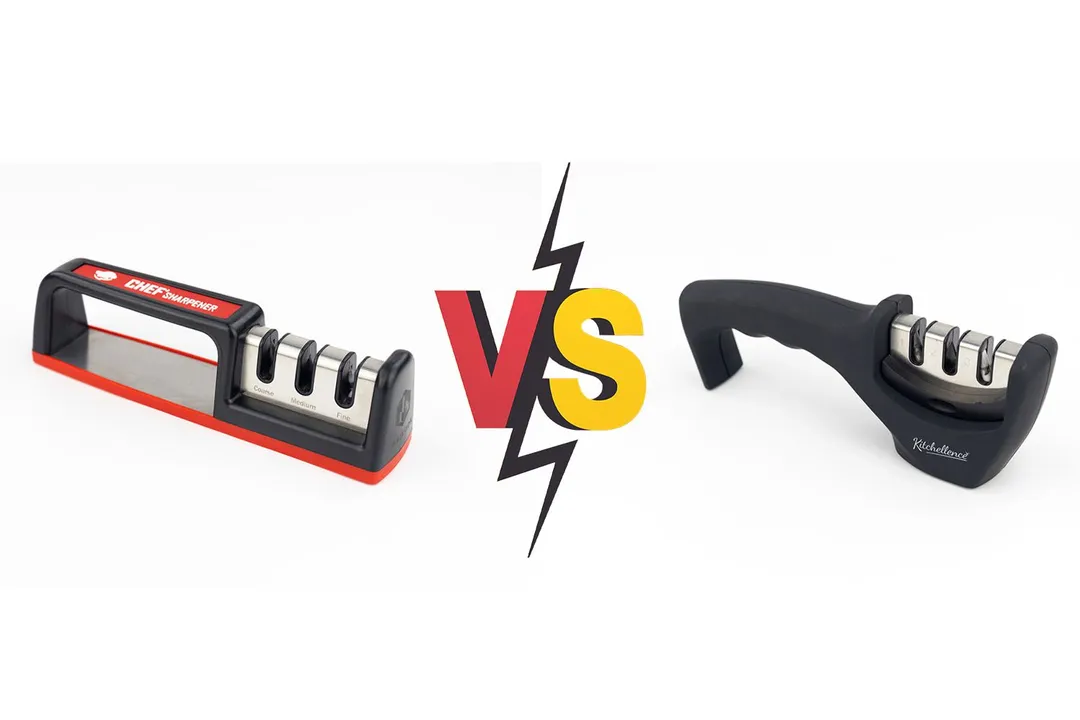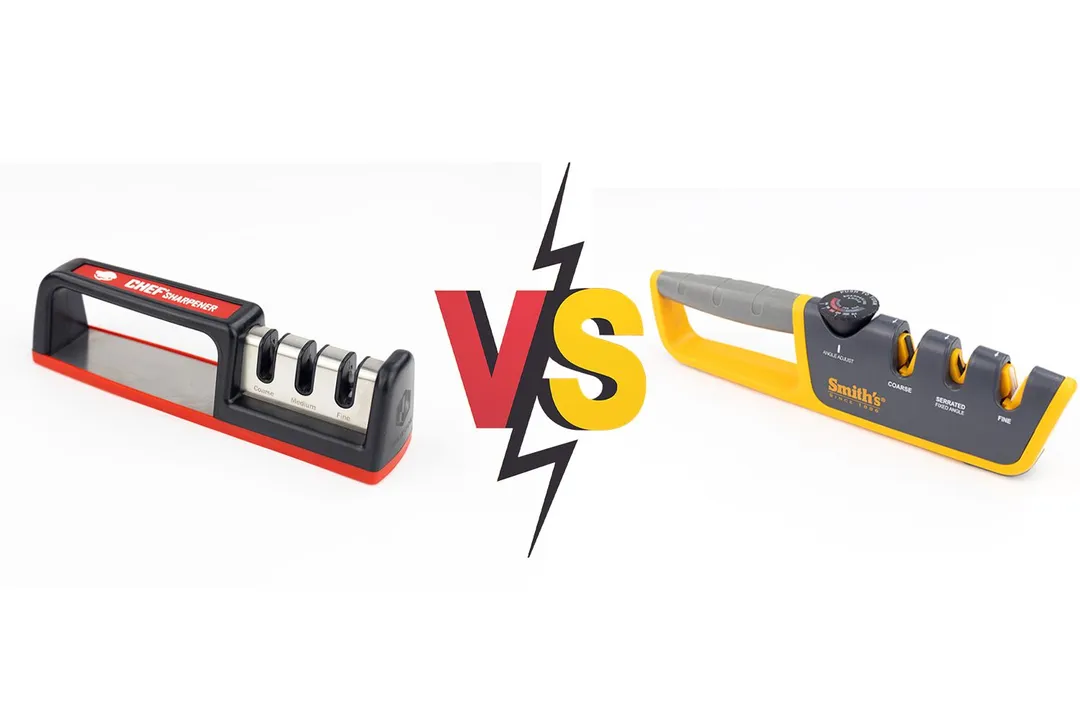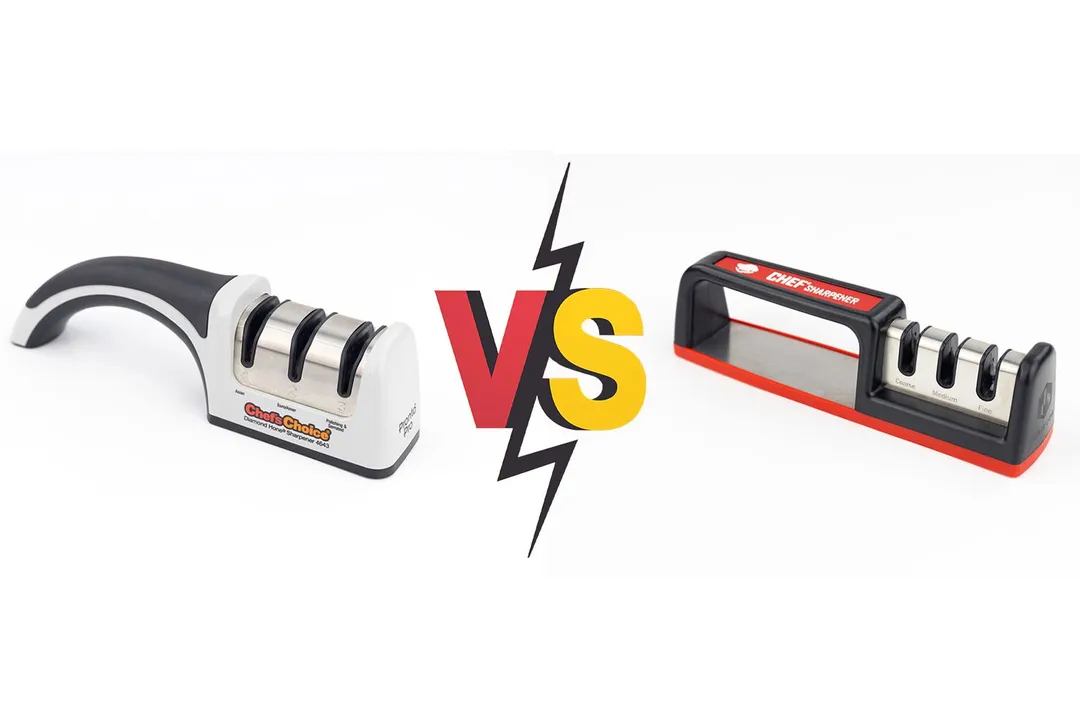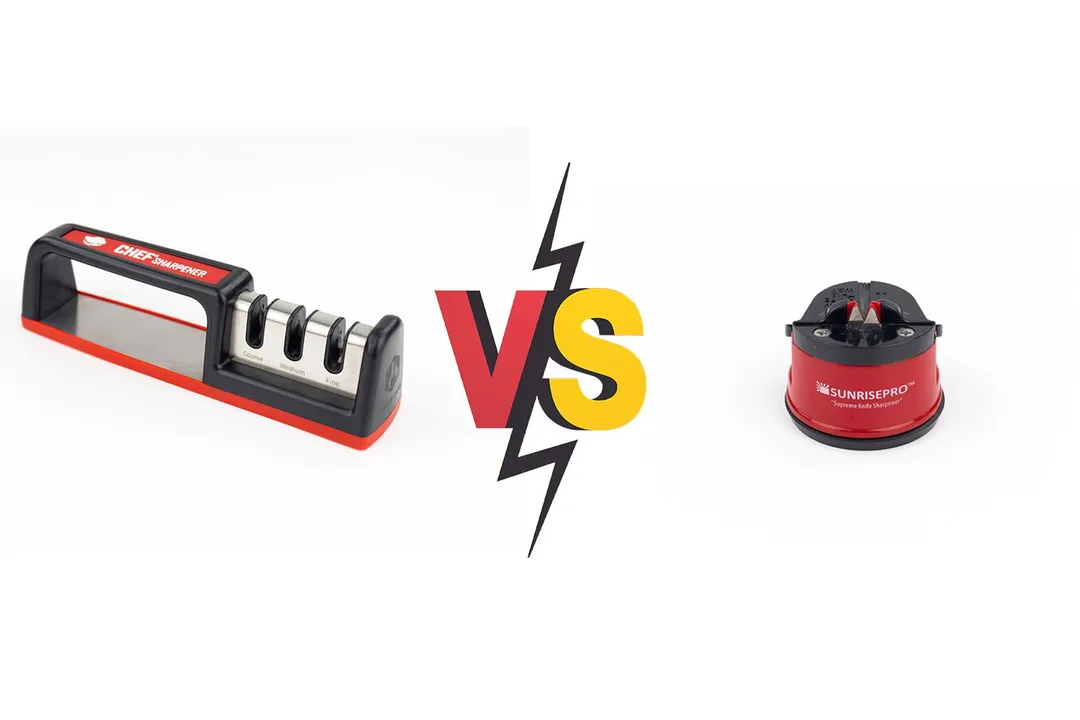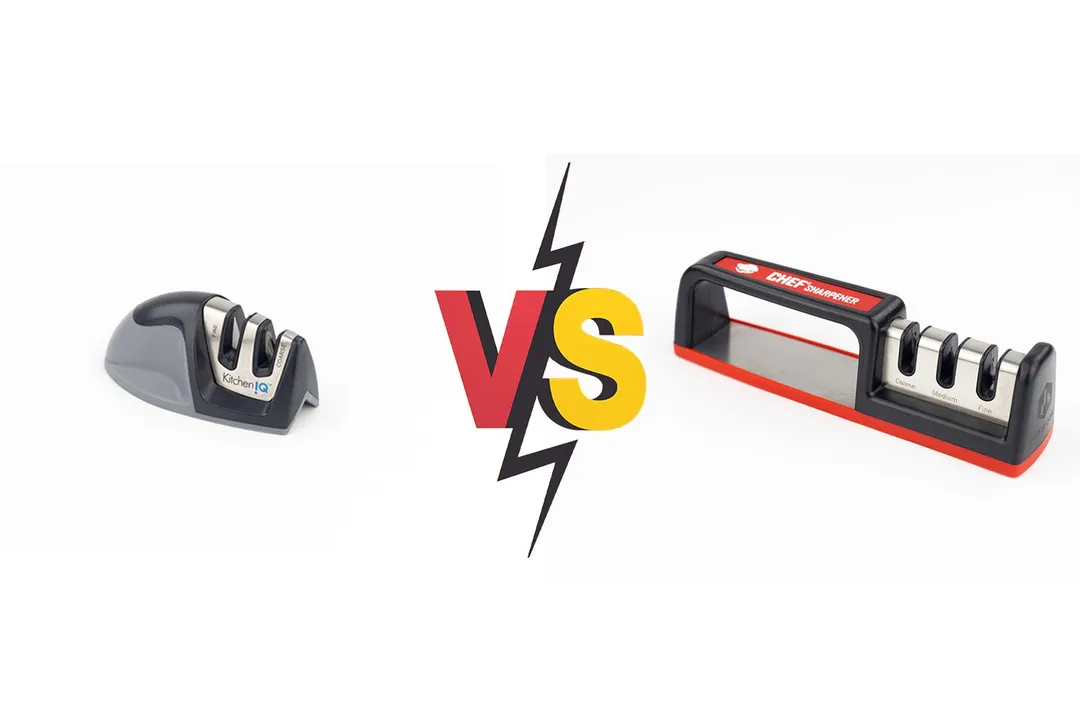Our recommendations are made independently through Research & Testing. We may receive commissions from purchases made via our links.
Cubikook CS-T01 vs. PriorityChef Manual Sharpener Side-by-Side Comparison
Cubikook CS-T01 vs. PriorityChef 2-stage sharpener: The two are close rivals, outperforming each other in different parameters.
Cubikook CS-T01
Tested Using Methodology v1.1PriorityChef
Tested Using Methodology v1.1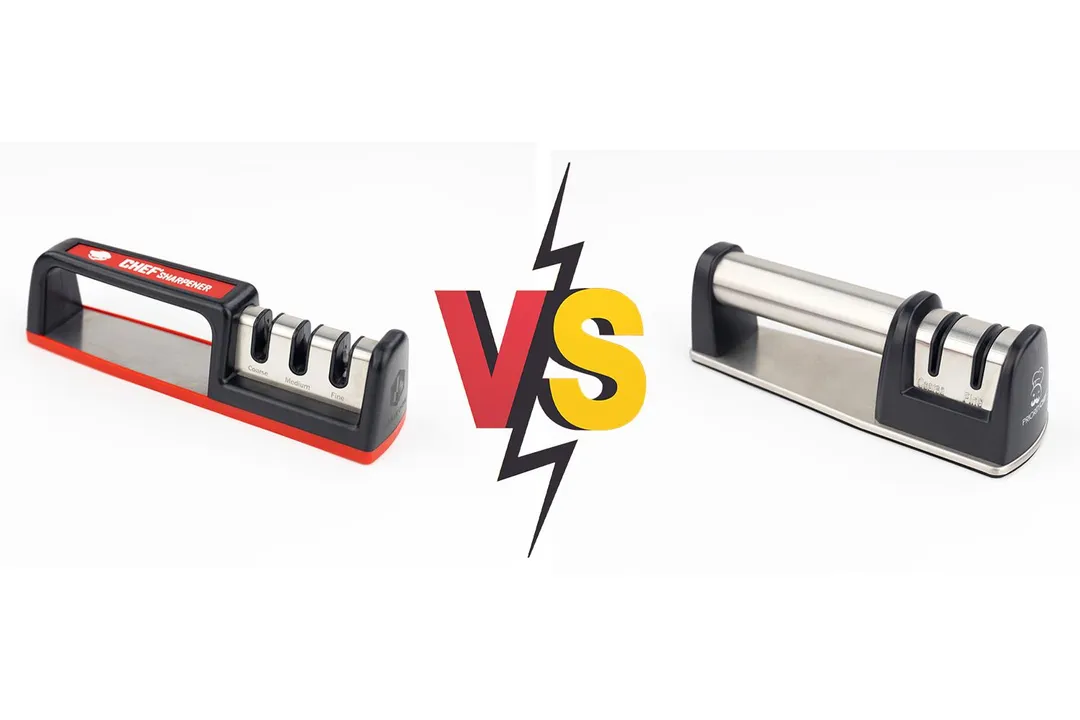
Overall Verdict
The Cubikook CS-T01 and the PriorityChef are among the best, if not the very best, manual sharpeners we’ve tested so far. The former garnered a slightly higher rating, but we’d say your choice between the two comes down to personal preference.
The Cubikook features a solid construction with a low center of gravity and a secure base. It’s stable, well-balanced, and easier to use than most. The 3-stage sharpener produces a smoother edge than the Priority Chef’s.
The latter, meanwhile, has a more modest build with some minor issues. However, its diamond-coated discs could sharpen faster than the Cubikook’s blades and rods while wasting less knife material, even though the highest level of sharpness these two sharpeners could achieve was the same (Level 8).
Pros & Cons
- Excellent stability
- Affordable price
- Consistent sharpness
- Solid and sturdy construction
- Modest height, low center of gravity
- Full, flat base
- Gimmick-free design
- Great edge retention
- Small ceramic rods
- Flaky brand label
- Cheap base pad
- Small slot openings
Key Specs
Where to Buy
*You help support HealthyKitchen101's product testing and reviews by purchasing from our retail partners.
Analysis and Test Results
Performance
Sharpening Time to Cut a Lemon
Material Retention
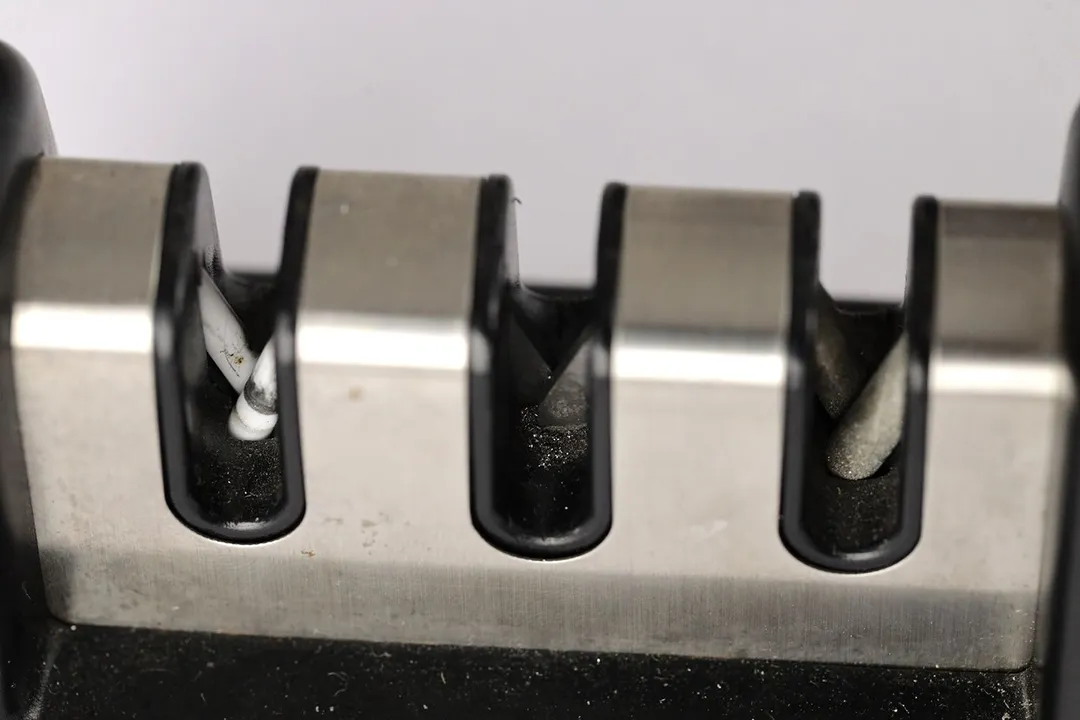
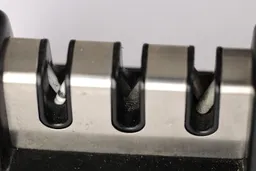
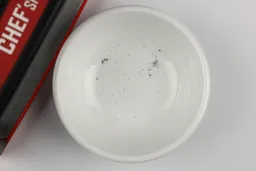
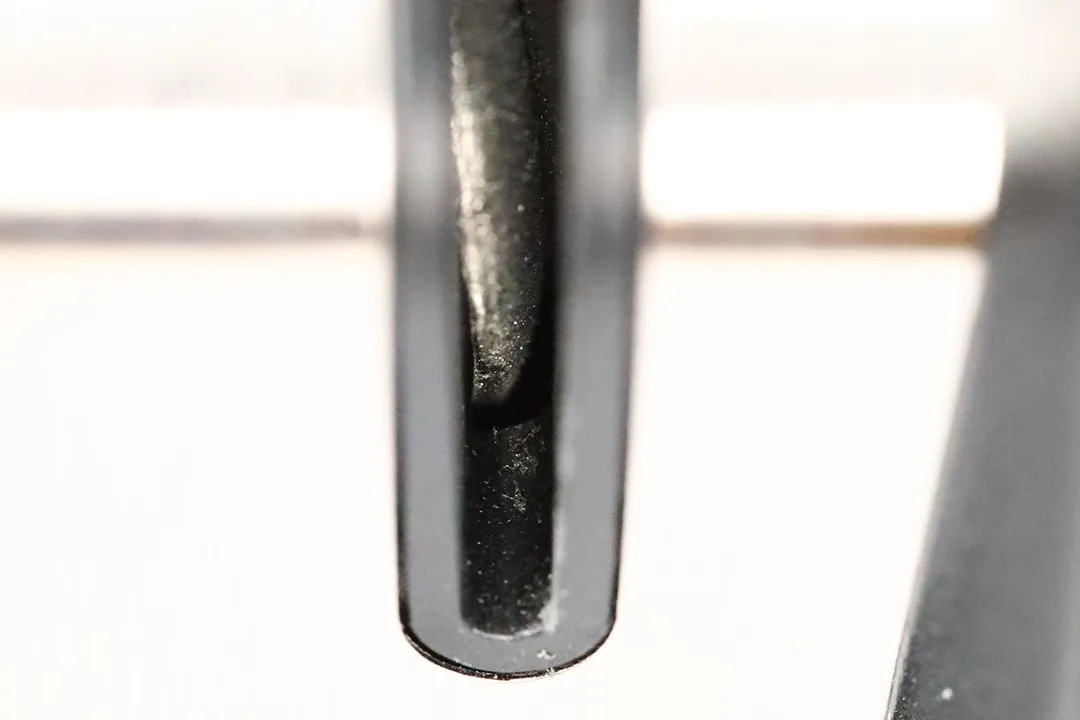
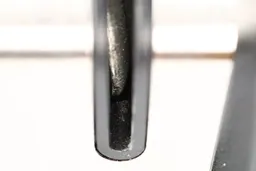
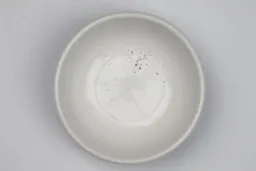
Maximum Sharpness Achieved
Edge Smoothness

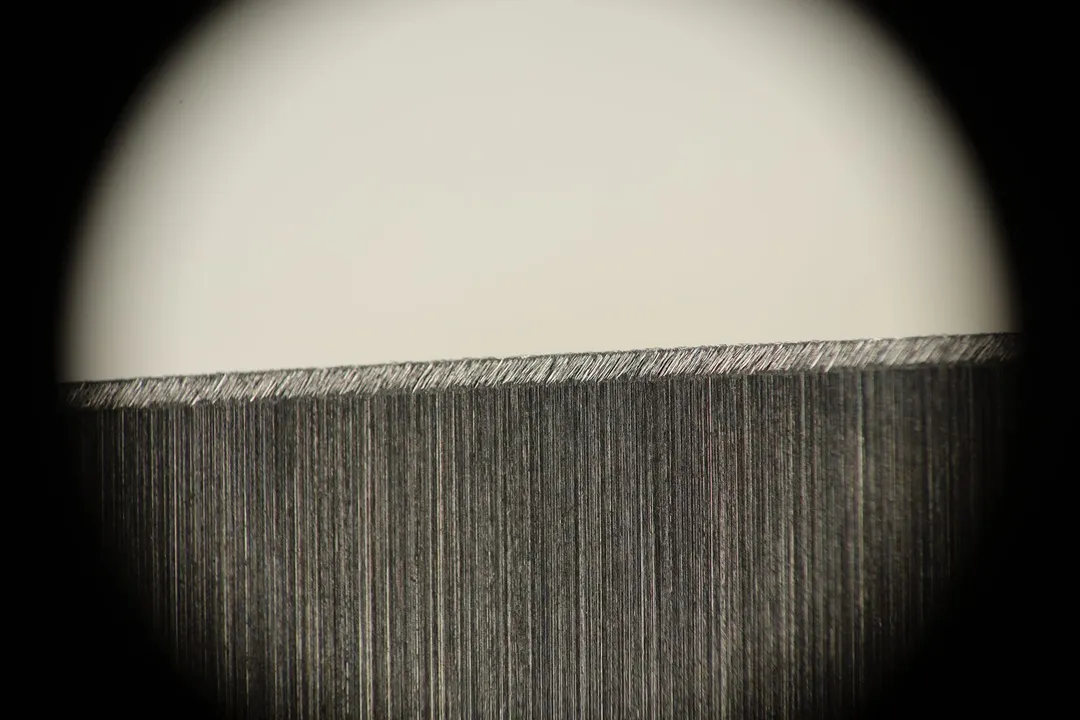
Design
In the Box
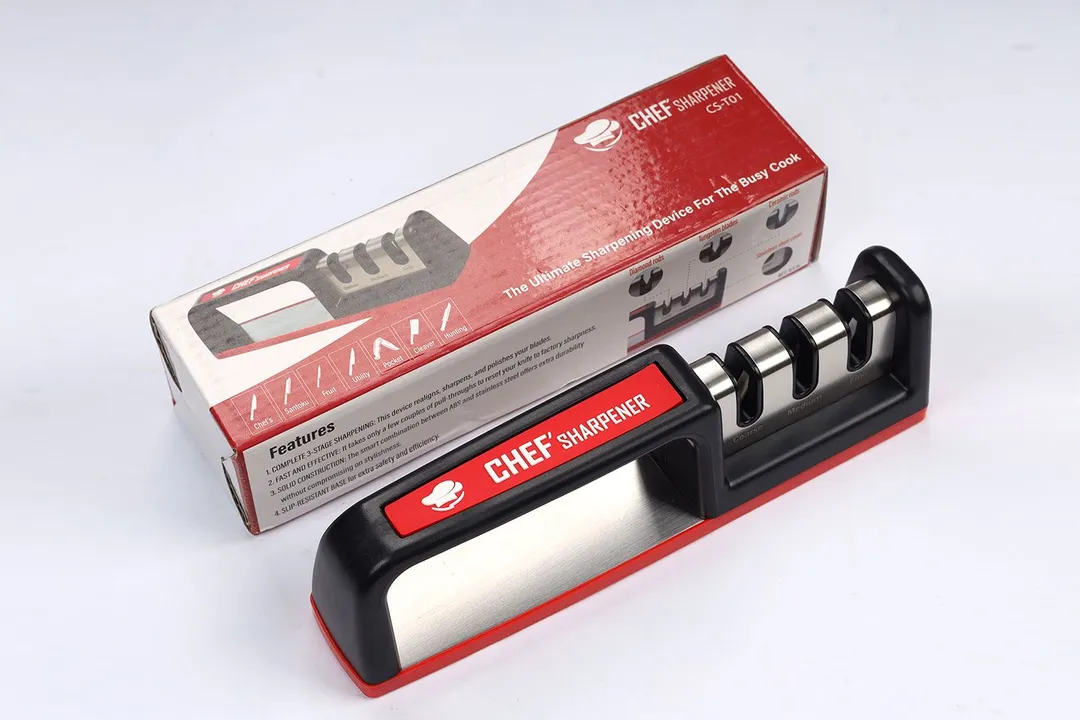
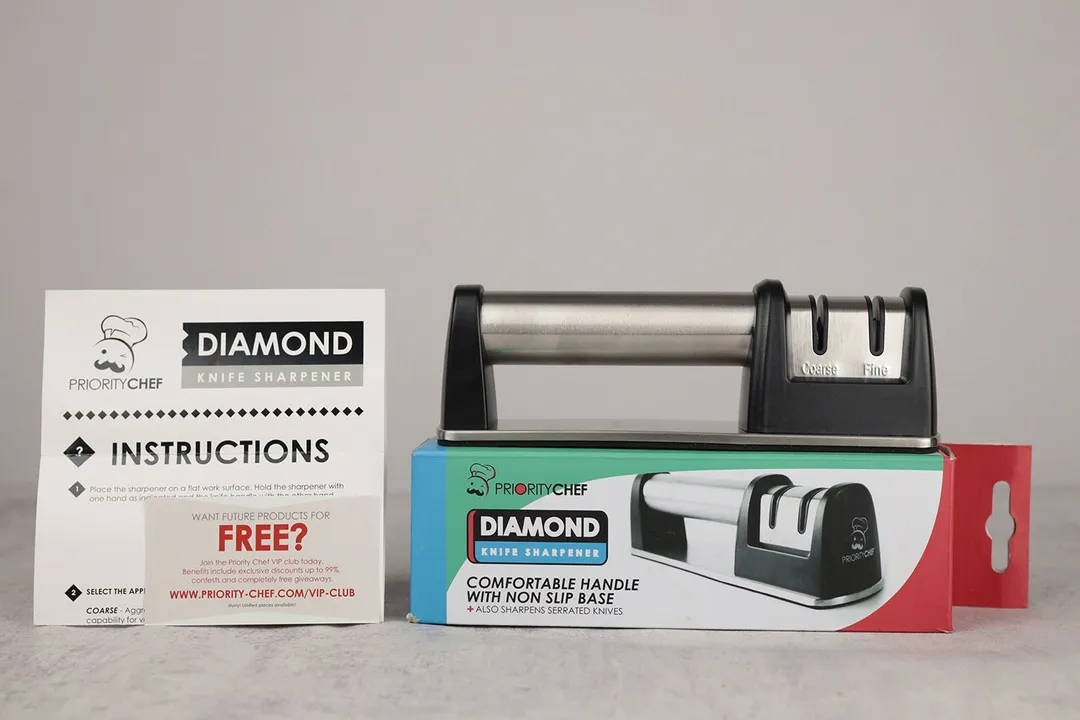
Dimensions
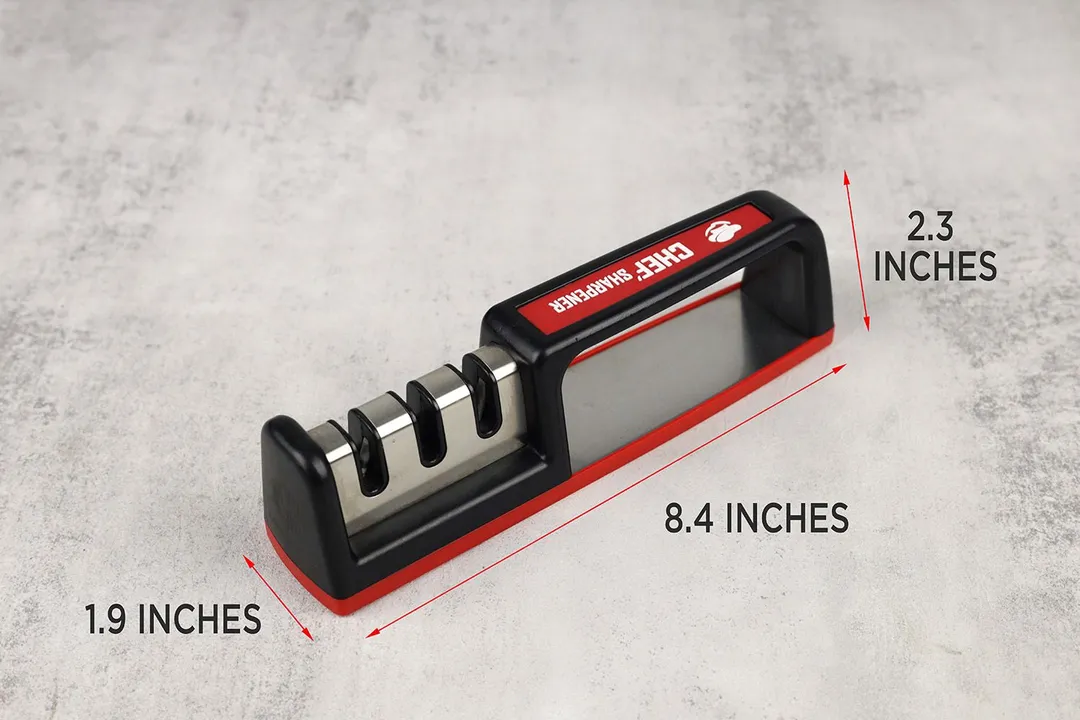
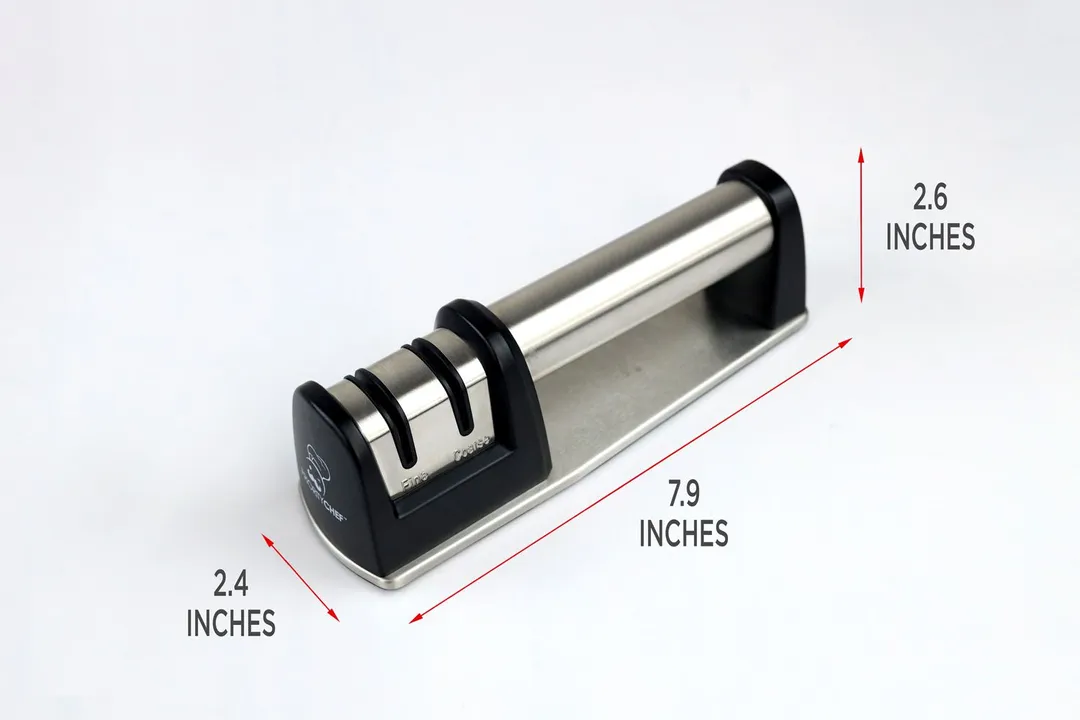
Build Quality
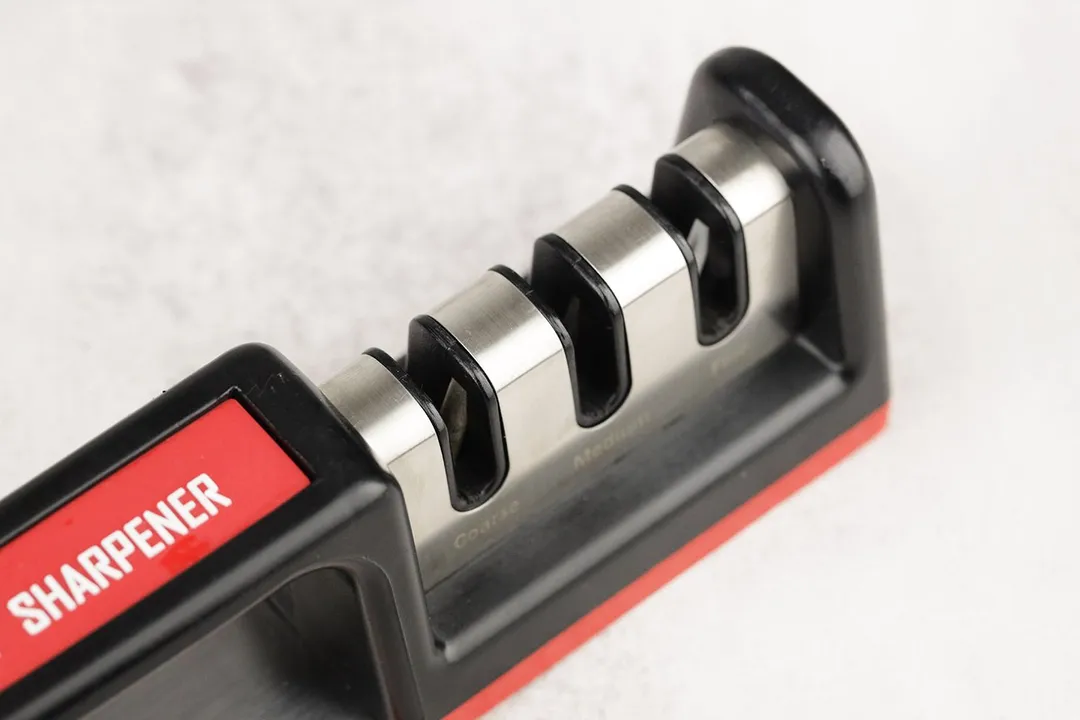
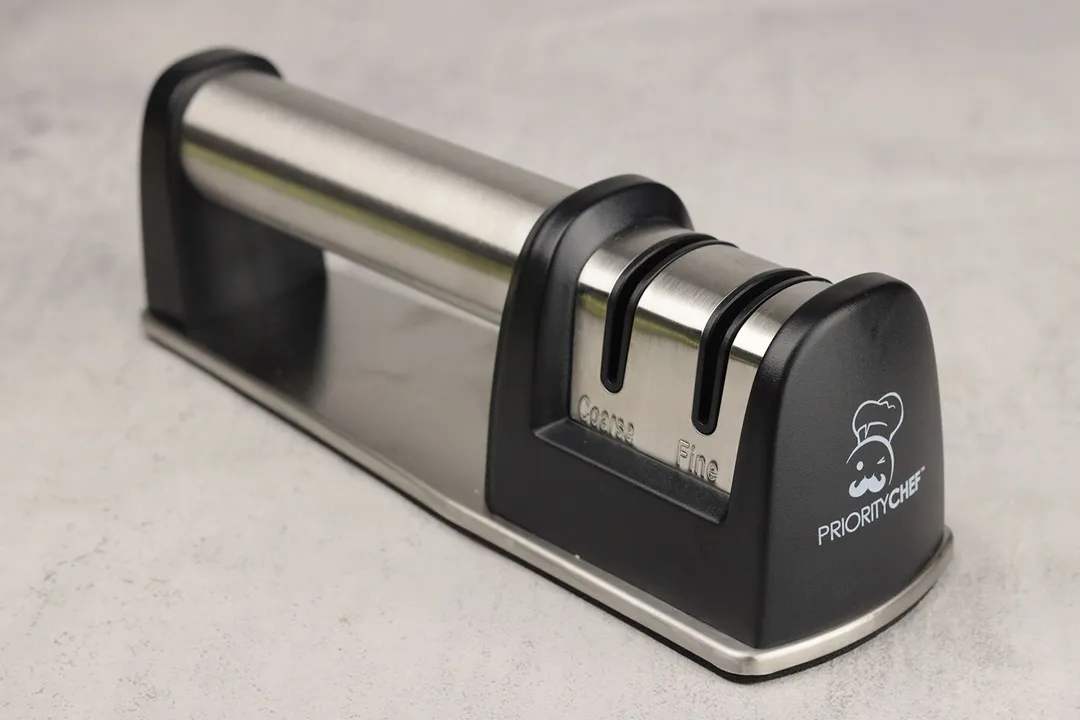
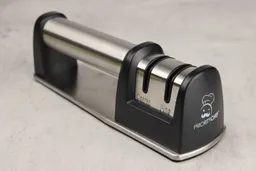

Working Section
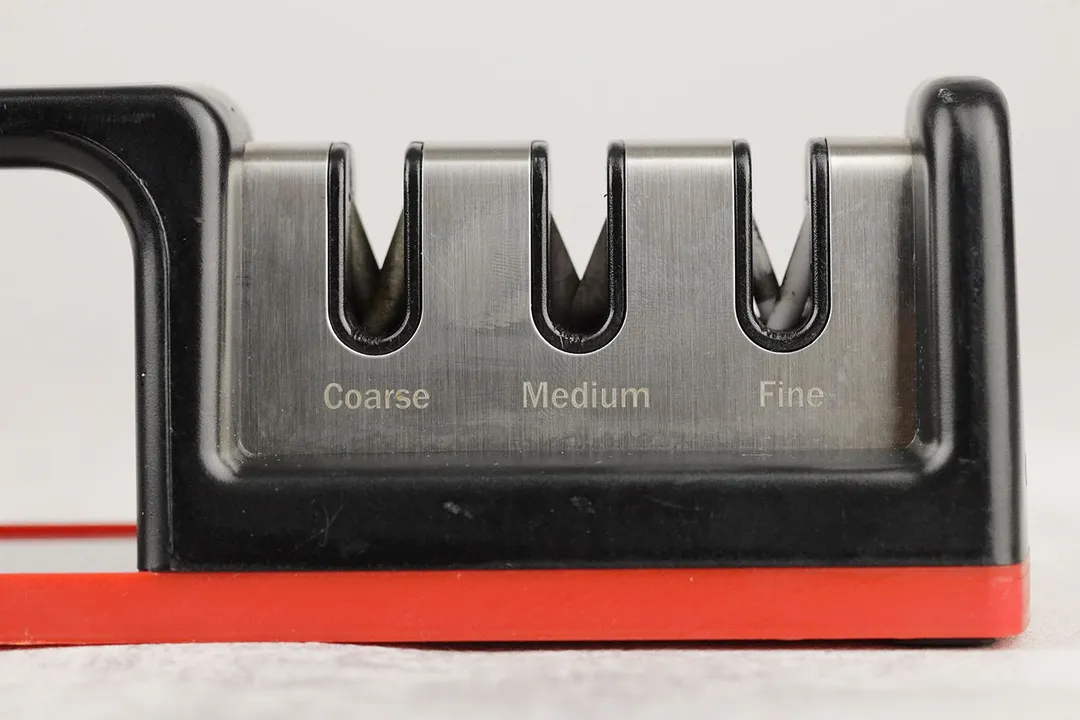
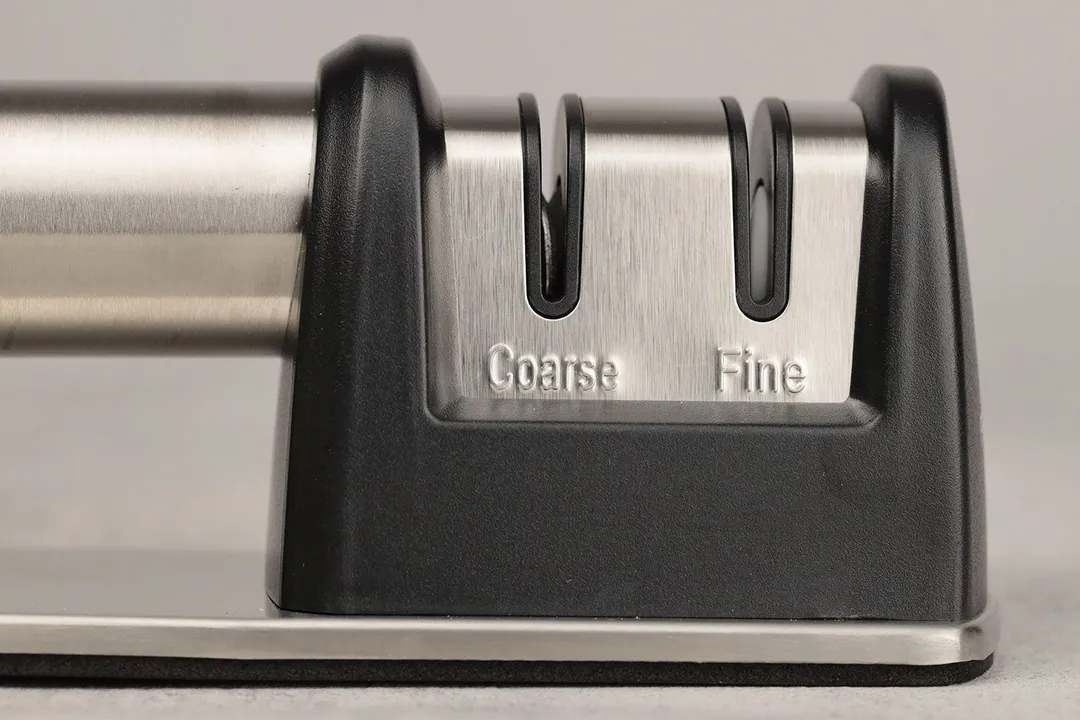
Base

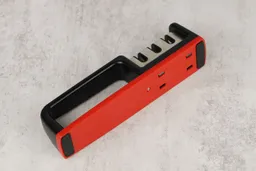
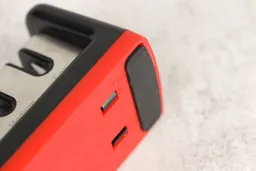
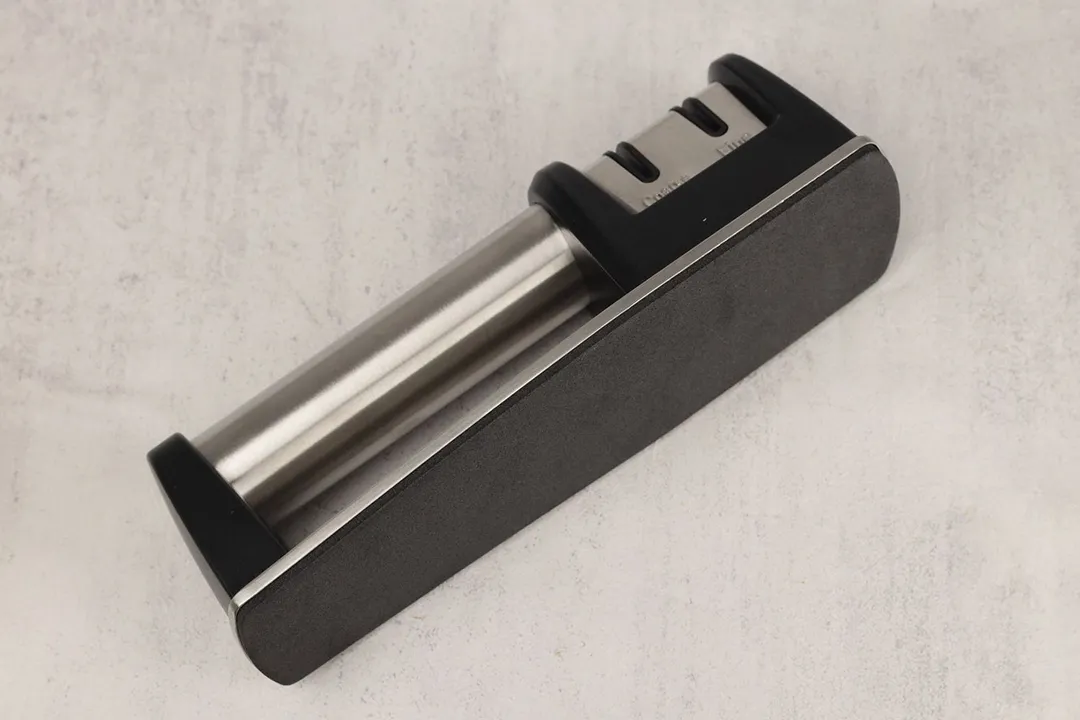
Grip
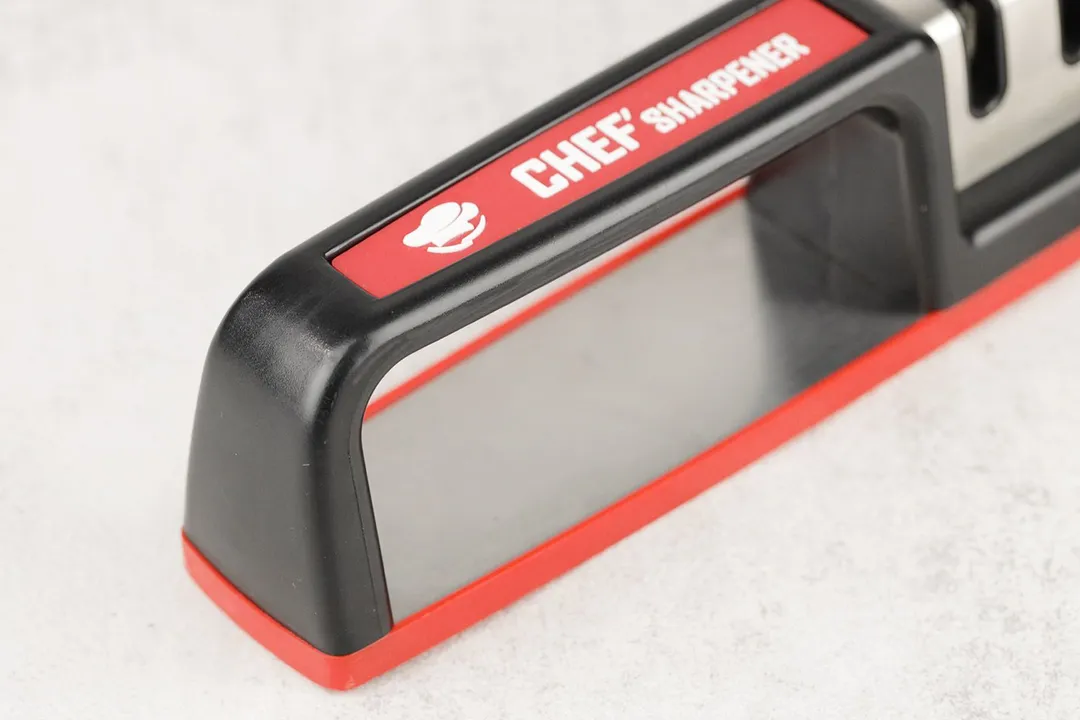
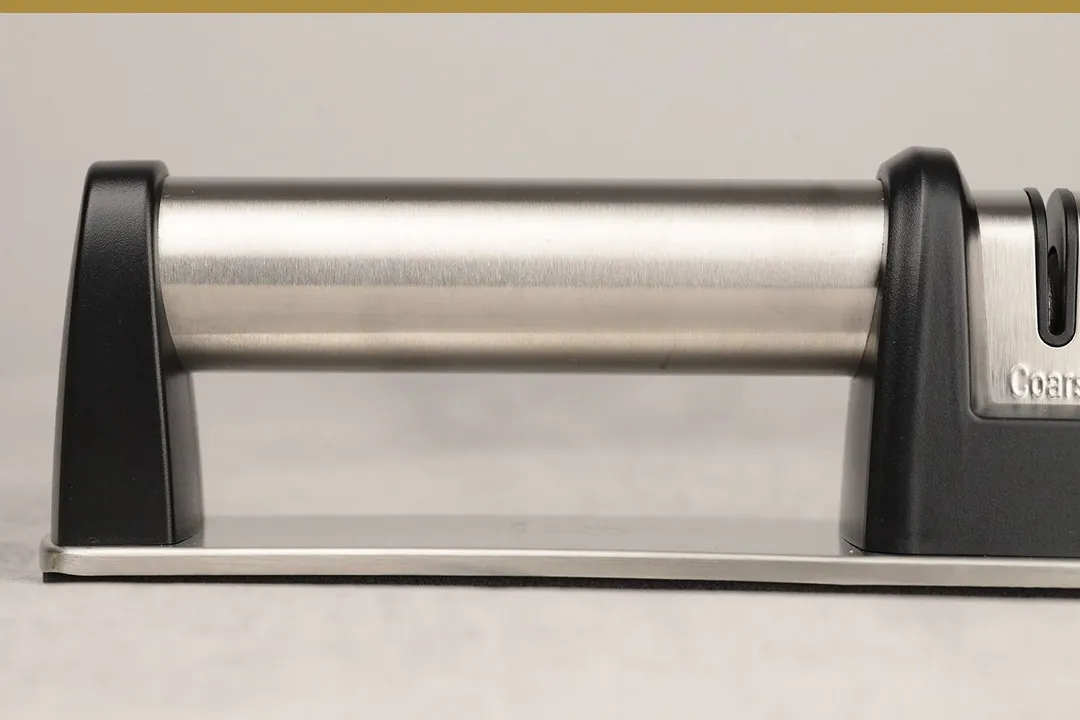
Usability
Slot Arrangement
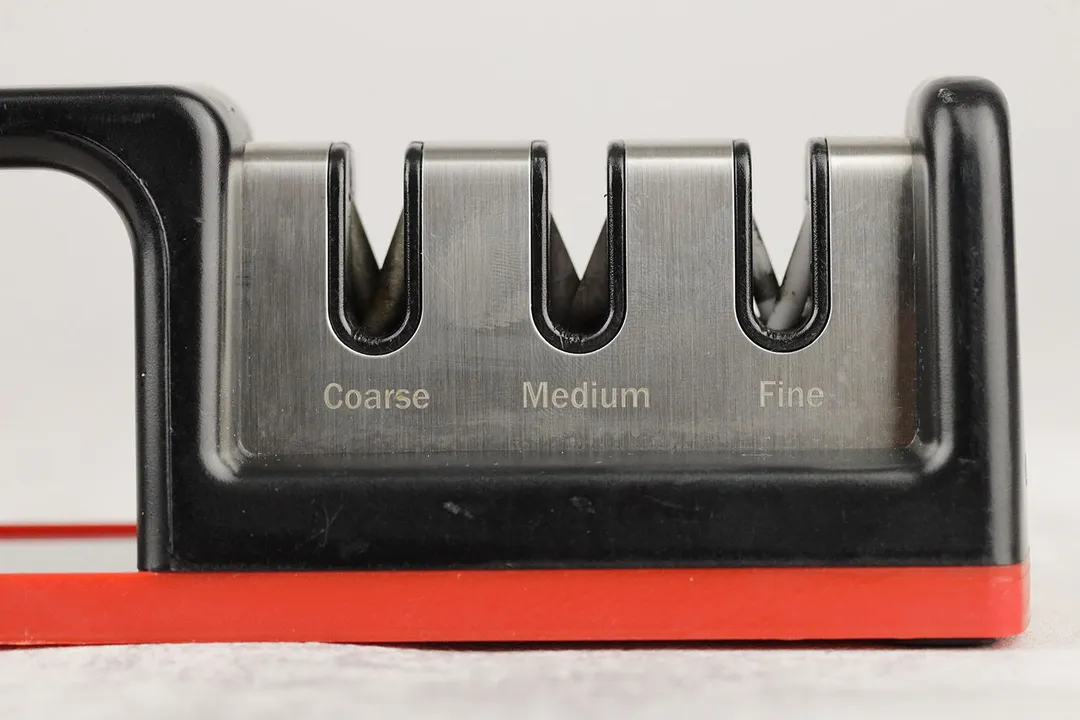

Insertion
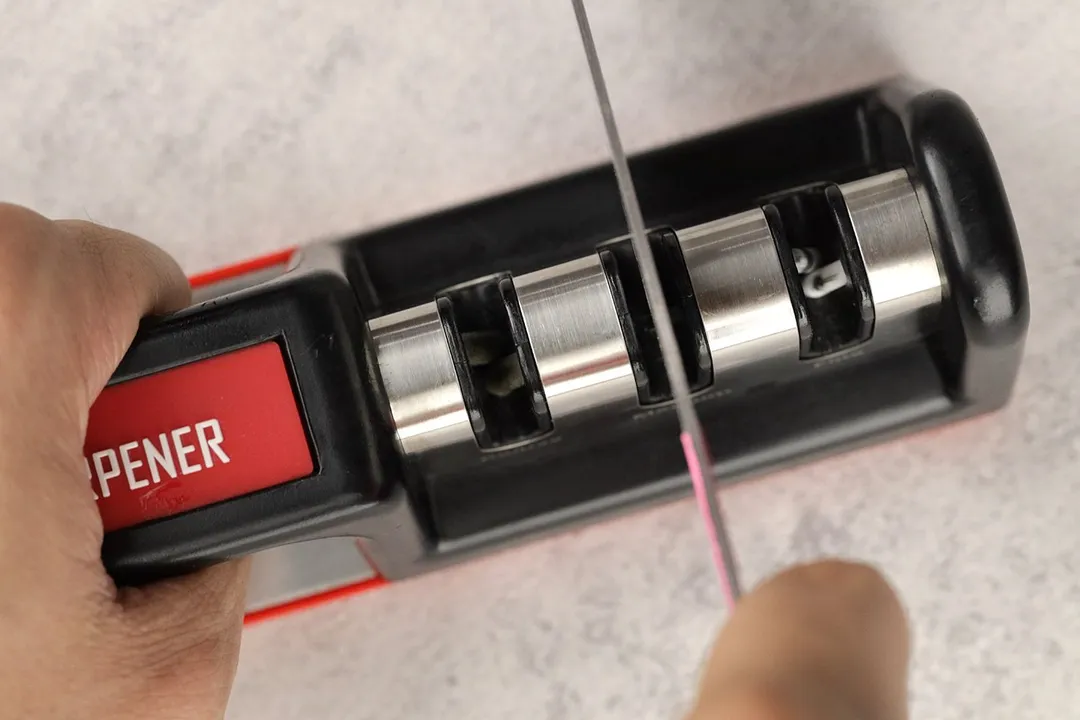
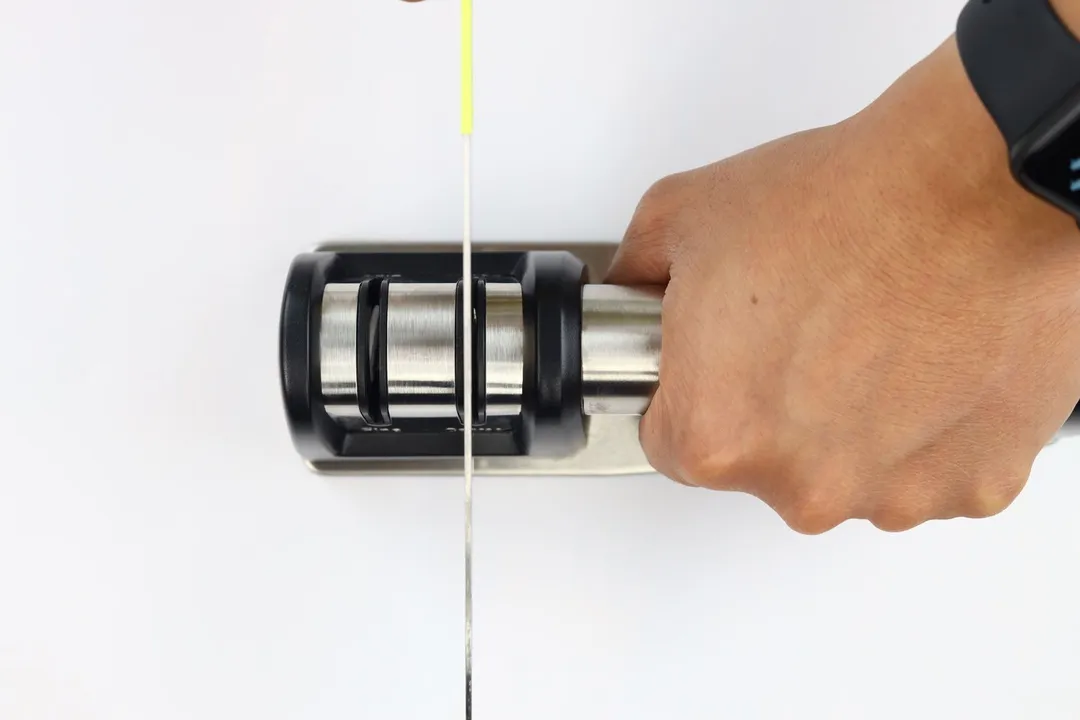
Pulling Through
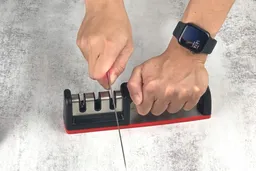
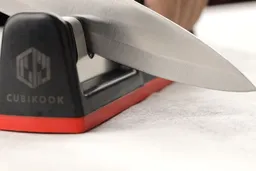
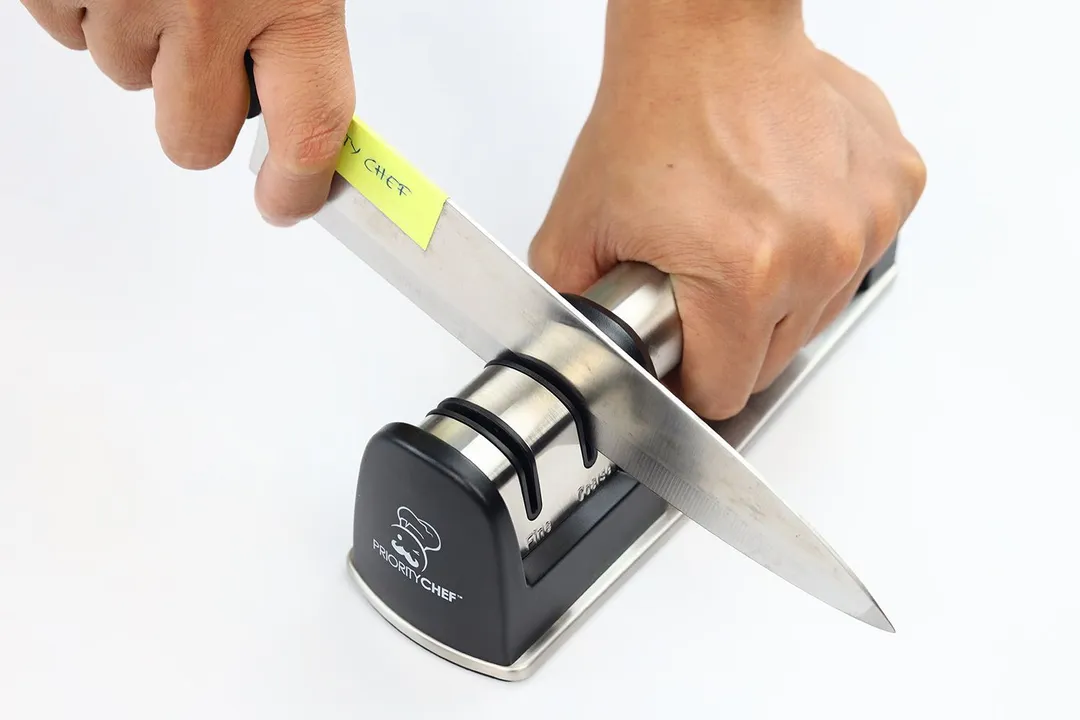
Stability on a Clean Surface
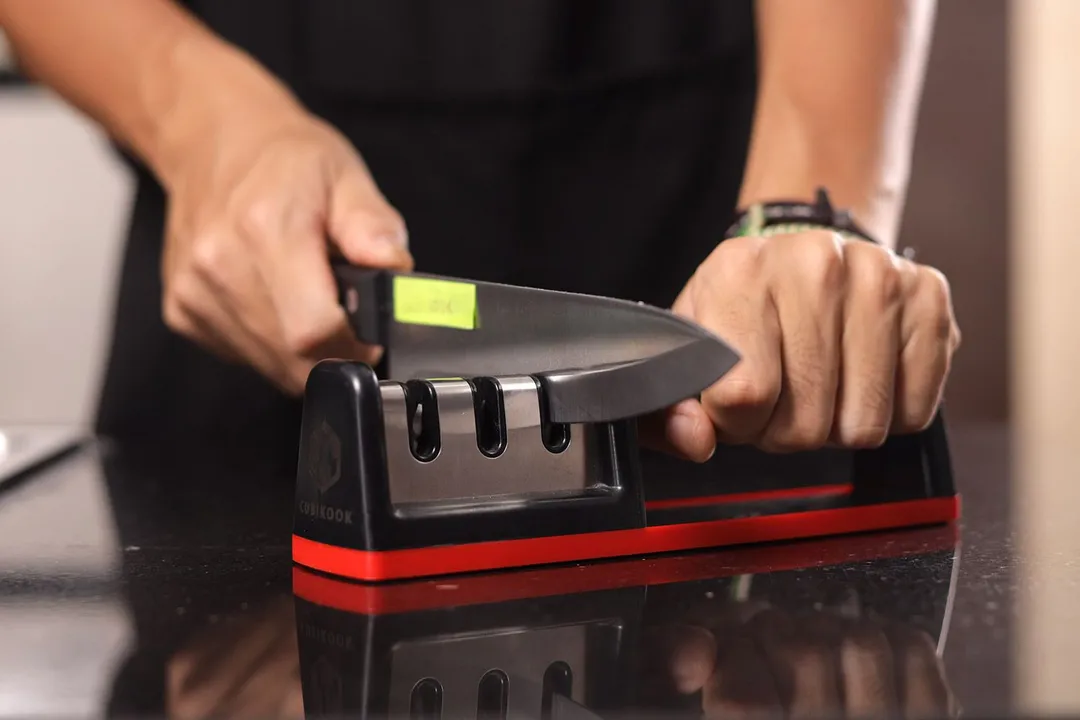
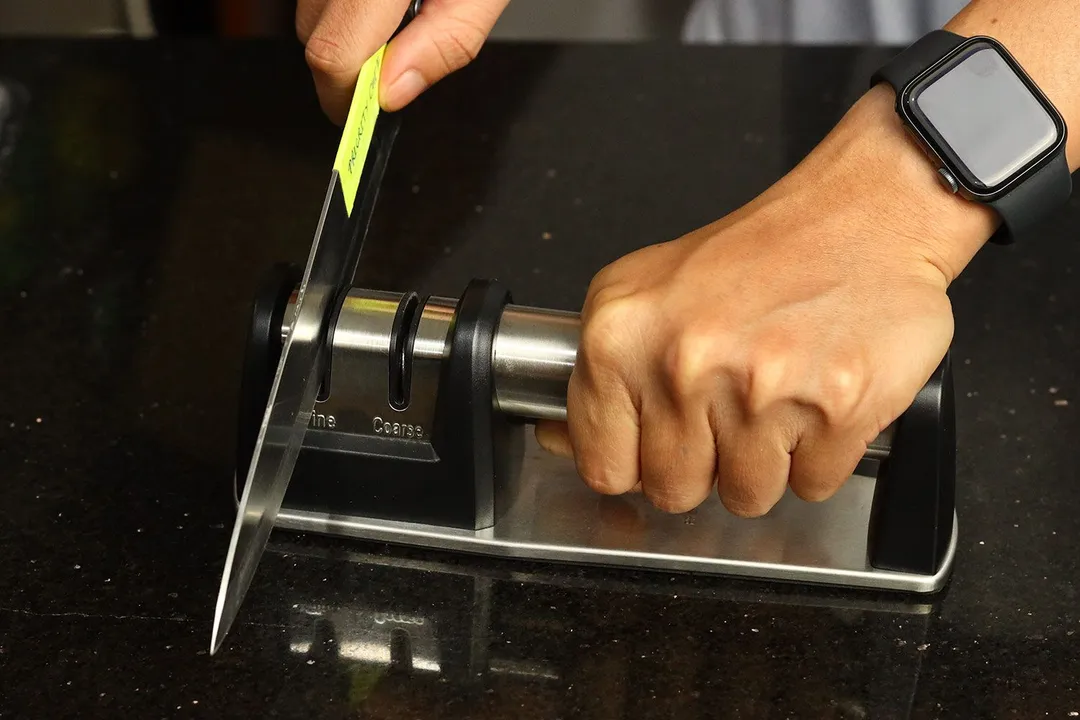
Stability on a Wet and Dirty Surface
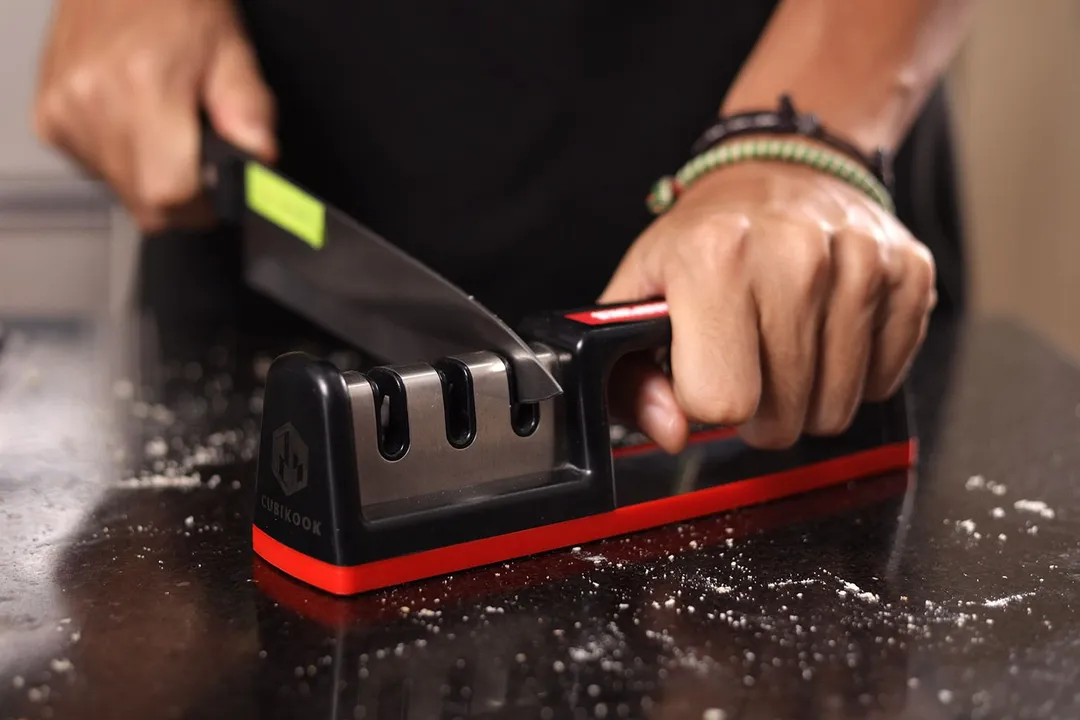

Behind the Comparison
Anh Ngo is a writer with 9 years experience at different media outlets, covering from public news and events to product testing and analysis. At HealthyKitchen101, she works across different departments, communicating closely with its network of writers, editors, and health, tech, and search engine experts to provide a meaningful and pleasant reading experience for visitors.
Lap is Head of the Research, Testing, and Review Team (RTR Team) at HealthyKitchen101.com, where he directs and supervises the testing of kitchen gadgets and appliances.
Nguyen Ntk is a graphic designer, photographer, and videographer whose philosophy centers around respecting and celebrating the beauty of reality. Through his lenses, Nguyen strives to capture the true essence of objects and events, showcasing and highlighting authentic features without distortion or exaggeration.



